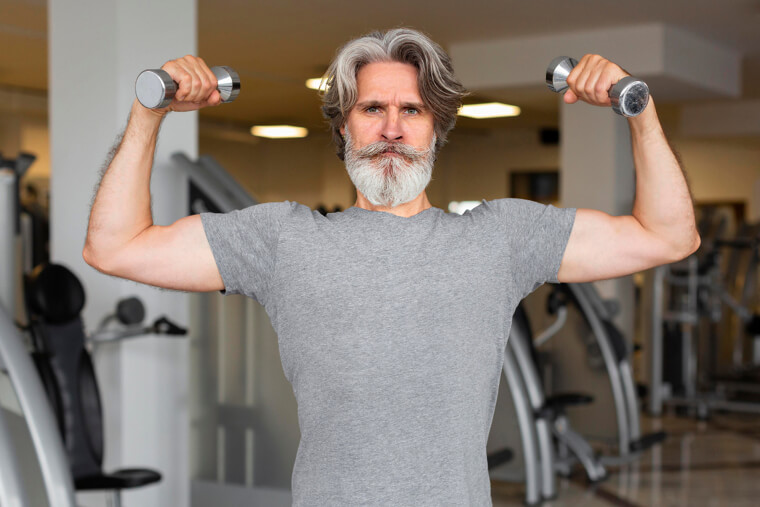Lifting Weights Isn’t Just for the Kids
Yes, ideally, you would have started strength training a long time before you hit your 50s, but if you haven’t, know that it’s never too late to start. Weightlifting is an incredible exercise to keep your muscles strong and reliable well into your senior years. Here is what weightlifting can do for your body.
Helps Combat Age-Related Muscle Loss
After 30, your muscles naturally start to lose strength at a rate of about three to five percent per decade. This, over time, leads to sarcopenia, an age-related decline of muscle strength and function. Strength training can help counteract this condition by creating micro-tears in the muscle fibres, which then heal and become stronger.
Makes Your Bones Stronger
Along with your muscles, your bone density also decreases as you age (especially if you’re a woman). Weightlifting puts external mechanical stress on your bones, triggering osteoblast activity, which naturally increases bone density.
Improves Cognitive Function
Lifting weights isn’t just good for your body, but also for your mind. It can bring about functional brain changes and increase cognitive function in older adults. It is also known to reduce the symptoms of depression seen in many older adults by releasing serotonin and dopamine, and boost the levels of brain-derived neurotrophic factor or BDNF.
Improves Metabolic Health
Your metabolic health is linked to your muscle mass. According to Dr. Pooja Gidwani (M.D.), a board-certified specialist in performance and longevity, post-menopausal women experience a natural shift toward increased fat storage and insulin resistance because of declining muscle mass. Strength training helps build muscle mass, which in turn supports a healthier metabolism.
Helps Maintain Balance and Coordination
According to the CDC, accidental falls are the leading cause of injury-related deaths in adults over 65. Strength training helps improve balance and coordination by targeting muscle groups that help keep your body stable, like your core, hips, and ankles.
If you’ve decided to start lifting weights post-50, here are a few tips to get you started:
If you’ve decided to start lifting weights post-50, here are a few tips to get you started:
Twice a Week Is Enough at First
Start slow, especially if you’ve never lifted weights before. Just two sessions a week are enough to counteract the effects of sarcopenia. You could build up to more, but always keep in mind that at an older age, your body is more prone to injury if it’s not well rested.
Incorporate Functional Mobility Exercises
Muscles don’t just give you strength; they also help with mobility and stability. So, it’s important to incorporate full-body, functional exercises that target all major muscle groups and mimic daily activities. A focus on proper warm-ups, cool downs, and stretching can also help prevent injury and increase mobility.
Focus on Mastering Form and Technique
The goal when strength training after 50 should not be to lift as much weight as you can; rather, a focus on improving form and technique is more effective. One to two sets of 15-20 repetitions of each move should be enough to help build muscle strength. When you start out, take your time and build a strong foundation based on good technique.









